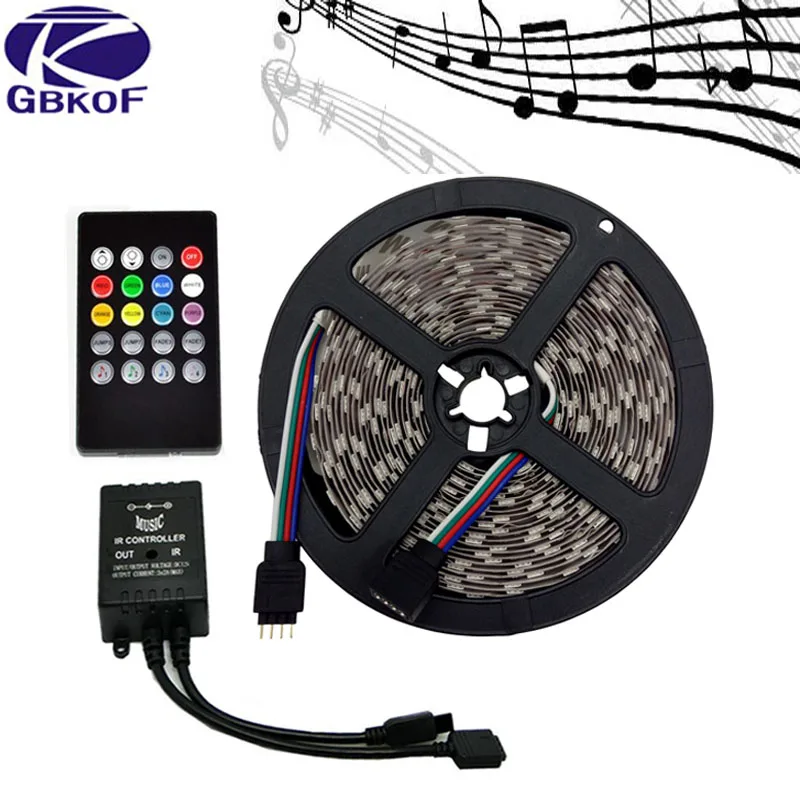

- #ARDUINO LED STRIP MUSIC HOW TO#
- #ARDUINO LED STRIP MUSIC INSTALL#
- #ARDUINO LED STRIP MUSIC ZIP FILE#
- #ARDUINO LED STRIP MUSIC PC#
- #ARDUINO LED STRIP MUSIC DOWNLOAD#
#ARDUINO LED STRIP MUSIC HOW TO#
If you want to dig a little deeper, you can refer to the FHT library which is what analyses the incoming audio. In this article, you will learn how to make an Arduino Music Reactive LED Strip. If you intend to use this project ongoingly or you want to fit it to your personal dancefloor, it would be wise to transfer it to stripboard and house it in a little box. Once you have it all up and running, you could start tweaking the code, adjusting variables to your liking. You can also adjust the sensitivity by turning the small dial on the reverse of the microphone using a small Philips screwdriver. You can adjust the sensitivity using the potentiometer.
Connect the 5VDC power to your circuit.Īfter a few seconds, the LED strip will start reacting to the music. Load the sketch to your Arduino by pressing on the right-pointing arrow. Uint8_t reverseX = (kMatrixWidth - 1) - x Set 'kMatrixSerpentineLayout' to true if your pixels are laid out all running the same way, like this: Set 'kMatrixSerpentineLayout' to false if your pixels are Leds=CHSV(prev_oct_j+y*30,saturation_prev, brightness_prev) Ĭonst bool kMatrixSerpentineLayout = false Saturation_prev=constrain(prev_oct_j+50, 0,255) īrightness_prev=constrain(prev_oct_j, 0,255) this fills in 11 LED's with interpolated values between each of the 8 OCT values J=j*30 // (force it to more discrete values) While (!(ADCSRA & 0x10)) // wait for adc to be ready The information in this post also works with other similar LED strips, such as strips of the WS28XX family, Neopixel strip and others. TIMSK0 = 0 // turn off timer0 for lower jitterĪDCSRA = 0xe5 // set the adc to free running modeĭIDR0 = 0x01 // turn off the digital input for adc0Ĭli() // UDRE interrupt slows this way down on arduino1.0ĪDMUX = 0x40 | (1 & 0x07) // set admux to look at Analogpin A1 - Master Volume This post is about the WS2812B LED strip, which is an addressable RGB LED strip. #define NUM_LEDS (kMatrixWidth * kMatrixHeight)įastLED.addLeds(leds, NUM_LEDS).setCorrection( TypicalLEDStrip ) 
int noise = Ĭonst uint8_t kMatrixHeight = 8 //-was 27

#define FHT_N 256 // set to 256 point fht #define OCT_NORM 0 // Don't normalise octave intensities by number of bins #define OCTAVE 1 // // Group buckets into octaves (use the log output function LOG_OUT 1) Open a new Arduino sketch and paste the following code:.In Arduino IDE, go to Tools>Port and select Atmega328P (Old Bootloader).In Arduino IDE, go to Tools>Processor and select Atmega328P (Old Bootloader).In Arduino IDE, go to Tools>Board and select Arduino Nano.

#ARDUINO LED STRIP MUSIC PC#
Connect the Arduino to your host PC with the mini USB cable. #ARDUINO LED STRIP MUSIC ZIP FILE#
Once downloaded, open the zip file and place the folder called FHT inside the Arduino’s libraries folder on your host computer.When FastLED appears, click on Install.In the Library Manager window, type FastLED in the search box.On the IDE’s menu go to Sketch>Include Library>Manage Libraries.
#ARDUINO LED STRIP MUSIC INSTALL#
Once downloaded, install the package by opening it and following any prompts. Real-time LED strip music visualization running on ESP32 based on Arduino or ESPHome platform - GitHub - zhujisheng/audio-reactive-led-strip: Real-time LED strip music visualization running.
#ARDUINO LED STRIP MUSIC DOWNLOAD#
On your host computer, go to and download the correct IDE for your operating system if you don’t already have it. Connect the ground cable of the power supply to the ground rail of the breadboard. Connect the live cable of the power supply to the live rail of the breadboard. Connect the right pin of the potentiometer to the ground rail on the breadboard. Connect the left pin of the potentiometer to the live rail on the breadboard. Connect the centre pin of the potentiometer to pin A1 on the Arduino. Connect the other pin of the resistor to pin D3 on the Arduino. Connect the BO connector of the LED strip to a pin of the resistor. Connect the +5V connector of the LED strip to the live connector of the DC connector socket. Connect the GND connector of the LED strip to the ground of the DC connector socket. Connect the OUT connector of the microphone to the A0 pin of the Arduino. Connect the VCC connector of the microphone to the live rail of the breadboard. Connect the GND connector of the microphone to the ground rail of the breadboard. The shorter leg marked with an arrow and – should connect to ground. Ensure that you respect the polarity of the capacitor. Bridge the 1000♟ capacitor between the live and ground connectors of the DC connector socket. Connect the Arduino’s VIN pin to the live rail of the breadboard. Connect the Arduino’s GND pin to the ground rail of the breadboard. This project will introduce you to the FHT library, an awesome resource when you need to analyse incoming audio. * * Created by ArduinoGetStarted.Arduino enables you to easily combine a microphone with addressable LED’s to create funky sound-reactive lighting which can be used standalone or as part of a more involved project.








 0 kommentar(er)
0 kommentar(er)
